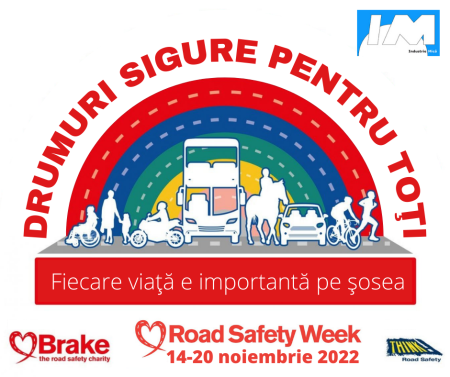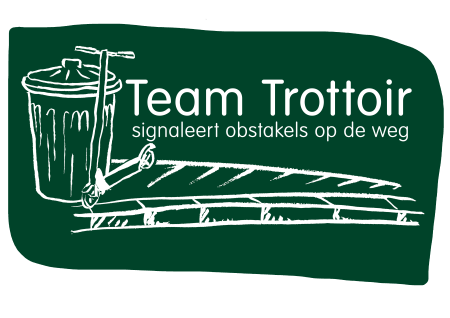Our members are dedicated to improving road safety and sharing their knowledge with the wider community. Here, you can explore our members' good practices – initiatives that have been assessed for their effectiveness in addressing a road safety problem and have proven results.
Get inspired – and sign up to share your good practices too!

Friday, April 21, 2023
1. Right-hand priority rule
1.1 Safety
1.2 Fluidity
2. The roundabout
Functionality
SMART ROUNDABOUT©
3. Parking
3.1. The parking parallel to the axis of the road
3.2. The parking perpendicular to the axis of the road
3.3. The oblique parking on the axis of the road
3.3.1 The parking at a sharp angle to the axis of the road
3.3.2 Parking at an obtuse angle to the road axis
4. Crosswalks: safety, fluidity, slow speed
4.1 The danger when crossing the street
4.2 Intersection blocking
4.3 Intermittent blocking
4.4 The impossibility of applying visible markings
4.5 Geometry of crosswalks, solution for excessive speed
5. Vehicle lights
5.1 The third brake light
5.2 Lights
5.3 Horizontal daytime or position lights
5.4 Signal lights
5.5 The surface and luminous intensity
5.6 Emergency lights
6. Entry and exit lanes, in and out of the highway
6.1 Length of acceleration and deceleration lanes
6.2 Common acceleration/deceleration lanes
7. Road markings and reflective elements
7.1 STOP and Yield markings
7.2 The reflectivity of markings
8. The devices with dispaly inside the cars
9. European technical inspection
10. European vehicle card
11. Final conclusions
1.1 Safety
1.2 Fluidity
2. The roundabout
Functionality
SMART ROUNDABOUT©
3. Parking
3.1. The parking parallel to the axis of the road
3.2. The parking perpendicular to the axis of the road
3.3. The oblique parking on the axis of the road
3.3.1 The parking at a sharp angle to the axis of the road
3.3.2 Parking at an obtuse angle to the road axis
4. Crosswalks: safety, fluidity, slow speed
4.1 The danger when crossing the street
4.2 Intersection blocking
4.3 Intermittent blocking
4.4 The impossibility of applying visible markings
4.5 Geometry of crosswalks, solution for excessive speed
5. Vehicle lights
5.1 The third brake light
5.2 Lights
5.3 Horizontal daytime or position lights
5.4 Signal lights
5.5 The surface and luminous intensity
5.6 Emergency lights
6. Entry and exit lanes, in and out of the highway
6.1 Length of acceleration and deceleration lanes
6.2 Common acceleration/deceleration lanes
7. Road markings and reflective elements
7.1 STOP and Yield markings
7.2 The reflectivity of markings
8. The devices with dispaly inside the cars
9. European technical inspection
10. European vehicle card
11. Final conclusions

Wednesday, April 19, 2023
- Reducir el riesgo de los trabajadores en carretera a través de una baliza incorporada al cono, para mejorar su visibilidad, especialmente por la noche y en momentos de baja luz.
- Dar información a los usuarios para prevenir la presencia de obras en la carretera, mediante apps y navegadores.
- Mejorar el trámite con las autoridades de gestión del tráfico, informando a tiempo real de dónde se están haciendo los trabajos de conservación y mantenimiento de carreteras.
- Tener datos de gestión de obras, como un mapa de actuaciones, horas de trabajo, zonas de obras...
- Dar información a los usuarios para prevenir la presencia de obras en la carretera, mediante apps y navegadores.
- Mejorar el trámite con las autoridades de gestión del tráfico, informando a tiempo real de dónde se están haciendo los trabajos de conservación y mantenimiento de carreteras.
- Tener datos de gestión de obras, como un mapa de actuaciones, horas de trabajo, zonas de obras...

Tuesday, April 11, 2023
The main purpose of the project is to unite communities and professionals from different areas of activity with the aim of reaffirming each person's right to safe journeys. The central message of this campaign is that every life matters on the road.

Wednesday, April 5, 2023
Obstakelvrije voetpaden, het waarneembaar maken van drempels voor blinde en slechtziende voetgangers aan de hand van een campagne vanuit het perspectief van blinde en slechtziende weggebruikers. Team Trottoir is een campagne waarin we zowel mensen met als zonder visuele beperking aansporen om obstakels in de kijker te zetten. Symfoon wil weggebruikers en lokale overheden in hun eigen omgeving bewust maken van het belang van een vrij voetpad om de veiligheid van blinde en slechtziende mensen te verhogen. Eén van de belangrijkste uitdagingen voor mensen met een visuele beperking is mobiliteit en verkeersveiligheid. Door een verminderd zicht of het ontbreken van zicht wordt een groot stuk van de autonomie ingeperkt en wordt zich verplaatsen als voetganger veelal de enige mogelijkheid. Daarom is het uiterst belangrijk dat we deze enige kans tot verplaatsing in een zo veilig mogelijke context stimuleren. Een toegankelijk voetpad is dus allereerst obstakelvrij.

Saturday, April 1, 2023
In Ireland, 43% of Learner Drivers practice unaccompanied, leading to an average of 10-12 fatal road collisions amongst this cohort annually.
This dissertation examined and investigated the Learner Driving process currently established in Ireland with a view to evaluating its effectiveness.
As part of the EDT programme in Ireland, learner drivers are recommended to undertake 36 hours of supervised driving. There is no requirement to log these hours currently unlike international best practice where supervised training hours are logged. When learner driver practice hours are required to be logged in Ireland, there will be a cohort of drivers who are unable to access a vehicle or sponsor for on-road driving practice.
This dissertation examined and investigated the Learner Driving process currently established in Ireland with a view to evaluating its effectiveness.
As part of the EDT programme in Ireland, learner drivers are recommended to undertake 36 hours of supervised driving. There is no requirement to log these hours currently unlike international best practice where supervised training hours are logged. When learner driver practice hours are required to be logged in Ireland, there will be a cohort of drivers who are unable to access a vehicle or sponsor for on-road driving practice.